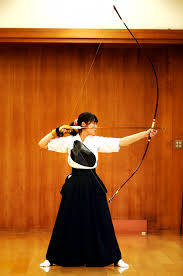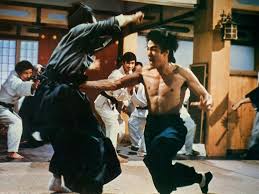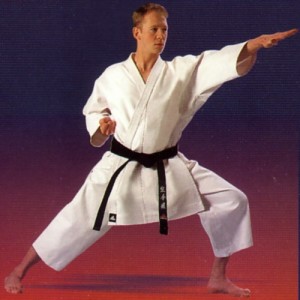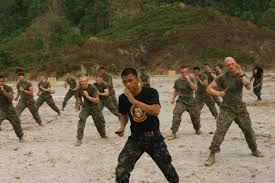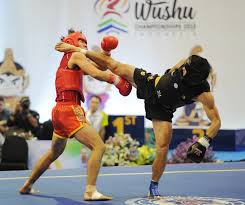Capoeira
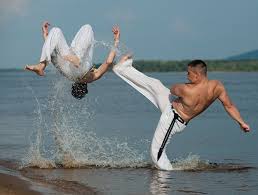 Capoeira is a national Brazilian martial art that combines elements of dance, play and acrobatics, accompanied by national Brazilian music. Capoeira differs from all other martial arts in the use of low positions, sweeps, kicks and even an abundance of acrobatics.
Capoeira is a national Brazilian martial art that combines elements of dance, play and acrobatics, accompanied by national Brazilian music. Capoeira differs from all other martial arts in the use of low positions, sweeps, kicks and even an abundance of acrobatics.
The modern type of martial art of capoeira differs from its early forms in that it is rarely used for military purposes. Far from practicing this martial art, it often seems to people that this is another type of contactless battle, but it is not. Capoeira is based on a game, sometimes weak, sometimes tough. The full force of the blows of the capoeurists depends on the specialized group, as well as on the specific circumstances of the game.
The history of capoeira
The first mention of capoeira dates from the 18th century, but in fact this martial art originated a little earlier. The generally accepted version says that capoeira arose thanks to black slaves in South America, who were brought by the Portuguese from different colonies – Congo, Guinea, Mozambique, Angola. It was the cruel treatment of the Brazilian slaveholders that motivated some of the slaves to flee to the Selva, where their African culture and religion met the Native American. Having escaped from the slave owners, they settled in the Kilombush, which means “free cities”, where capoeira began to emerge and spread.
In addition, various sources talk about the origin of capoeira in their own way. So, according to some sources, capoeira came from a subculture of African national dance, where it initially carried the combat aspect, which later appeared in Brazil. According to other sources, capoeira came from a special African martial dance ritual called “ngolo”, which was an integral attribute of this rite in the southern regions of Angola. It was supposed to resemble a zebra dance, a symbol of the fact that young warriors entered into a ritual struggle with each other. But, despite the variety of versions of origin, in capoeira, nevertheless, there are elements of dance.
The development of the history of capoeira martial art is also inextricably linked with the legend of the hero Zumbi dos Palmares, which has become a symbol of resistance for the entire people of Brazil. A hero named Zumbi led one of the largest uprising of runaway slaves in the Republic of Palmaris, which lasted for about 70 years under a government blockade.
Capoeira, as a form of martial art, is full of various kicks, arms and heads. There are counterattack actions, throwing elements, deviations and movements. Power stances and acrobatic elements betray her special beauty.
All base element names are Portuguese, as Portuguese is the official language of Brazil. Literal translation of names into Russian will not give a complete understanding of the implementation of the elements. At first, only poor and slaves practiced capoeira, that is, people who had no education. They came up with the names of movements and strokes that are most understandable to themselves. For example, many strokes in the name have the word meia lua, which means a crescent, since the movements really resembled a crescent.
The basic technique is the foundation for learning capoeira. So, displacements, slopes and strokes are studied only after studying the basic displacement called jinga (ginga). Jinga allows you to constantly change your position and move away from the line of attack. Gingi movements resemble a pendulum, where the capoeirista moves at three points and changes position, each time placing his foot forward.
The technique of capoeira The technique of capoeira strikes resembles the technique of many martial arts. And this is not a secret, since it is quite difficult to come up with new movements, but still, you can find many differences here. In capoeira there are kicks with support on the foot. In Angola, for example, all strikes are sometimes made at once to several points. Jumping hits in capoeira also varied. Capoeira uses kicks, arms and heads. All blows are inflicted by capoeurists past the enemy or on top of the enemy. But in real battles, such attacks are very effective. Blows are usually applied to any part of the body, but high ones are often delivered to the head or upper body.
In contrast to the shock technique, there are also a variety of protective actions, cares and deviations from strikes. Here, the protective technique is quite specific, because the movements are low and fast. In capoeira, blows are not blocked, since the participant’s task is to evade blows in time, changing their position or becoming one of the defensive stances.
In capoeira, esquivas are divided into intuitive and technical. Slopes that are not automatic, as they evade an impact, are called intuitive, which is a natural defensive reaction to an impact. Technical slopes are those that require a transition to a special position, protecting the area of possible impact. Technical deviations make it possible to retaliate, counterattacking.
